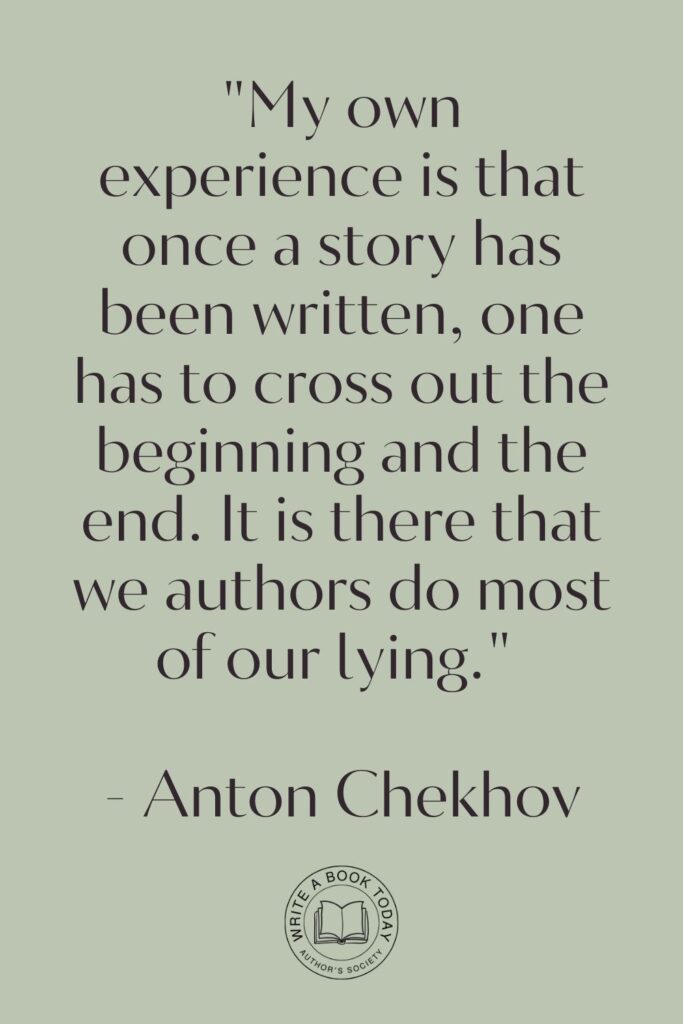Have you ever read a story where the main character just didn’t quite resonate?
Perhaps they felt like a shadow, moving through the plot without leaving a significant mark. This is a common plight for writers who find their protagonist development lacking depth or dynamism.
Fear not, for there are effective ways to breathe life into your characters, making them as memorable as your favorite literary heroes.
Let’s dive into the art of crafting engaging protagonists and ensuring their journey captivates readers from start to finish.
Understanding the Protagonist’s Role
In the grand tapestry of storytelling, the protagonist is the thread that holds everything together. They are the heart of the narrative, driving the plot and often serving as the lens through which the audience experiences the story.
A well-developed protagonist is crucial for creating a connection with readers, as they become invested in the character’s triumphs and tribulations.
The Importance of Protagonist Development
Protagonist development is the process of evolving your main character from a mere sketch into a fully fleshed-out individual.
This involves more than just detailing their physical attributes or backstory; it requires an exploration of their internal world – beliefs, motivations, and conflicts.
A dynamic protagonist not only reacts to the events around them but also instigates change, growing alongside the narrative.
This growth keeps readers engaged, as they witness the character’s transformation and root for their success.
A compelling protagonist should possess both strengths and flaws. These imperfections make them relatable and provide room for growth.
Consider iconic characters like Harry Potter, whose bravery is tempered by impulsiveness, adding layers to his personality.

What Makes a Protagonist Engaging?
An engaging protagonist is one that readers can empathize with, even if they do not share the same experiences or worldview.
This connection often stems from the character’s relatability, which can be achieved through realistic emotions, vulnerabilities, and desires.
Additionally, a protagonist should have clear goals that drive their actions, creating a sense of purpose that propels the narrative forward.
Consider the following elements to enhance your protagonist’s appeal:
- Complexity: Allow your protagonist to embody contradictions. They can be strong yet vulnerable, confident yet insecure. This complexity mirrors real human nature.
- Authenticity: Ensure your protagonist’s decisions and reactions are consistent with their established personality and backstory.
- Change: Let your protagonist evolve in response to the story’s events, showcasing personal growth and adaptation.
Common Pitfalls in Protagonist Creation
Even seasoned writers can stumble into traps that leave their protagonists feeling flat or unconvincing.
Recognizing these pitfalls is the first step toward avoiding them and ensuring your character’s journey is both believable and compelling.
Google Docs is for notes. Scrivener is for novels. Upgrade your writing game and try it for free today!

Identifying and Overcoming Flaws
Flaws are essential for protagonist development, but they must be handled with care. A character without flaws can seem unrealistic, while one with too many can become unsympathetic.
Striking the right balance is key. Use flaws to create conflict and drive the plot, but ensure they are relatable and forgivable.
For instance, a protagonist struggling with self-doubt may resonate with anyone who has questioned their abilities, adding depth to their character arc.
Reveal your protagonist’s flaws gradually through their actions and choices. This allows readers to discover their complexities over time, enhancing the character’s depth and relatability.

Crafting a Compelling Backstory
A rich backstory can add layers to your protagonist, providing context for their motivations and behaviors. However, it’s crucial to integrate this backstory naturally into the narrative.
Rather than overwhelming readers with information upfront, let the character’s past unfold through their interactions and responses to current events.
This technique not only maintains the story’s flow but also keeps readers intrigued by the gradual revelations.
Consider using flashbacks or dialogue to weave backstory into the plot, ensuring it enhances rather than detracts from the main narrative.
A well-crafted backstory can explain a protagonist’s fears, dreams, and motivations, making them more relatable and engaging.
Defining Clear Motivations and Goals
Motivations are the driving force behind a protagonist’s actions. Without clear motivations, a character’s journey can feel aimless and unconvincing.
Ensure your protagonist’s goals are both compelling and logically tied to their backstory. This connection not only grounds their actions in reality but also creates a coherent narrative arc.
Motivations can be intrinsic, such as a quest for self-discovery, or extrinsic, like seeking revenge or justice.
Regardless of their nature, they should be strong enough to propel the protagonist through the story’s challenges, providing a clear path for character growth and development.
Building Emotional Stakes
Emotional stakes are what make readers care about your protagonist’s journey. They create tension and investment, as the audience becomes emotionally connected to the character’s successes and failures.
To build these stakes, it’s important to intertwine the protagonist’s internal and external conflicts, creating a rich tapestry of challenges that demand resolution.

Creating Tension through Internal and External Conflicts
Conflicts are the lifeblood of storytelling, pushing characters to their limits and revealing their true selves.
Internal conflicts, such as moral dilemmas or personal insecurities, add depth to a protagonist’s journey, while external conflicts, like battles against antagonists or challenging circumstances, drive the plot forward.
Balancing these elements ensures your protagonist’s journey is both engaging and emotionally resonant.
Consider how these conflicts can interact, amplifying the stakes and forcing the protagonist to confront their deepest fears and desires.
This interplay not only enriches the narrative but also fosters character growth, as the protagonist learns and evolves in response to these challenges.
Feeling lost with your debut novel?
Fiverr Pro connects you with expert editors, designers, and marketers – everything you need to get your book ready for success!

The Power of Moral Dilemmas
Moral dilemmas are powerful tools for protagonist development, as they force characters to make difficult choices that reveal their values and priorities.
These dilemmas add complexity to the narrative, as readers become invested in the protagonist’s decision-making process and the consequences of their actions.
By presenting your protagonist with challenging ethical questions, you can deepen their character and enhance the story’s emotional impact.
Use moral dilemmas to highlight your protagonist’s internal struggles and growth.
These moments of choice can define their character arc and leave a lasting impression on readers.
Highlighting Character Growth and Evolution
A protagonist’s journey should be one of transformation, as they learn from their experiences and emerge changed by the story’s end.
This growth not only makes the character more relatable but also provides a satisfying resolution to their arc, leaving readers fulfilled and inspired.

The Journey from Flawed to Fantastic
The most compelling protagonists are those who undergo significant change, evolving in response to the story’s events.
This transformation can be gradual, reflecting the character’s internal journey as they confront their flaws and overcome obstacles.
By the story’s conclusion, the protagonist should have grown in some meaningful way, whether by gaining new insights, developing strengths, or reconciling with their past.
Ensure your protagonist’s evolution is consistent and believable, rooted in their experiences and interactions throughout the narrative. This coherence will make their growth feel authentic and rewarding.
Showcasing Strengths and Vulnerabilities
A well-rounded protagonist possesses both strengths and vulnerabilities, creating a complex and relatable character. These traits should be woven into the narrative, influencing the protagonist’s actions and decisions.
By showcasing both sides of their personality, you can add depth and nuance to their journey, making them more engaging and memorable.
Consider how your protagonist’s strengths can aid them in achieving their goals, while their vulnerabilities create challenges and conflicts.
This balance adds tension to the narrative and provides opportunities for growth, as the character learns to navigate their own complexities.
No marketing platform? No social following? No problem!
Publisher Rocket helps you market your debut novel like a pro.
It’s a gamechanger for debut authors – try it today!


Utilizing Supporting Characters for Depth
Supporting characters play a crucial role in protagonist development, offering contrast, support, or opposition that enhances the main character’s journey.
These characters can serve as mirrors, reflecting the protagonist’s traits and highlighting their growth, or as catalysts, pushing the protagonist toward change.
The Role of Antagonists in Protagonist Development
Antagonists are often the driving force behind a protagonist’s journey, presenting challenges that test their resolve and character.
A well-crafted antagonist should be more than just a villain; they should have their own motivations and complexities that make them a formidable opponent.
By providing a worthy adversary, you can elevate the stakes and drive the protagonist’s development, as they are forced to confront their own weaknesses and grow in response.

Using Foils and Mentors Effectively
Foils and mentors are valuable tools for highlighting a protagonist’s traits and facilitating their growth.
A foil character, who contrasts with the protagonist, can emphasize their strengths and weaknesses, while a mentor offers guidance and wisdom that aids in their development.
These relationships add depth to the narrative, providing opportunities for reflection and learning as the protagonist navigates their journey.
Incorporating Unique Traits and Quirks
Unique traits and quirks can set your protagonist apart, making them memorable and distinct. These characteristics should be woven into the narrative, influencing the protagonist’s interactions and decisions.
By giving your character distinctive features, you can add depth and complexity to their personality, enhancing their relatability and engagement.
Memorable Characteristics that Stick with Readers
Memorable protagonists often possess unique traits that make them stand out in readers’ minds. These can be physical, such as a distinctive appearance or mannerism, or psychological, like a particular worldview or belief.
By integrating these traits into the character’s actions and dialogue, you can create a vivid and lasting impression that resonates with your audience.
Avoid clichés when crafting your protagonist’s traits. Instead, strive for originality and authenticity, ensuring their characteristics feel genuine and integral to their personality.
Balancing Complexity and Relatability
While complexity adds depth to a protagonist, it’s important to maintain relatability. A character who is too complicated or inaccessible can alienate readers, while one who is too simplistic may fail to engage.
Striking the right balance ensures your protagonist remains both intriguing and approachable, allowing readers to connect with their journey and invest in their growth.

Final Thoughts on Engaging Protagonists
Crafting a captivating protagonist is an art that requires careful consideration and creativity.
By focusing on their development, motivations, and relationships, you can create a character that resonates with readers and drives your narrative forward.
Remember, a dynamic protagonist is not only the heart of your story but also the key to its success.
Embracing the Creative Process
Writing is a journey of discovery, and developing your protagonist is no exception. Embrace the creative process, allowing your character to evolve and surprise you as the story unfolds.
By staying open to new ideas and possibilities, you can create a protagonist that feels alive and authentic, captivating readers with their depth and complexity.
Encouraging Writers to Explore Their Characters
Don’t be afraid to delve deep into your protagonist’s psyche, exploring their fears, desires, and conflicts.
This exploration not only enriches your character but also enhances the overall narrative, creating a story that is both engaging and meaningful.
Remember, the more you understand your protagonist, the more your readers will too, forging a connection that lasts beyond the final page.








